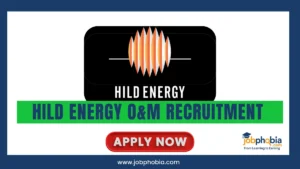200+ World Geography MCQs | World Geography | Top World Geography MCQs with Answer Quiz |
World Geography MCQ type Questions with answer
1. Which of the following does not belong to the solar system?
(A) Asteroids
(B) Comets
(C) Planets
(D) Nebula
Answer: (D)
2. Which is a celestial phenomenon occuring due to stars?
(A) Ozone hole
(B) Black hole
(C) Rainbow
(D) Comet
Answer: (B)
3. The milky way is classified as
(A) Spiral Galaxy
(B) Electrical Galaxy
(C) Irregular Galaxy
(D) Round Galaxy
Answer: (A)
4. ‘Big Bang theory’ is related to
(A) Continental Drifts
(B) Origin of the Universe
(C) Origin of the Himalayas
(D) Eruption of Volcanoes
Answer: (B)
5. Time taken by the Sun to revolve around the centre of our galaxy is
(A) 2.5 crore years
(B) 10 crore years
(C) 25 crore years
(D) 50 crore years
Answer: (C)
6. The limit beyond which stars suffer internal collapse is called
(A) Chandrashekhar limit
(B) Eddington limit
(C) Hoyle limit
(D) Fowler limit
Answer: (A)
7. A ‘black hole’ is a body in space which does not allow any type of radiation to come out. This property is due to its
(A) Very small size
(B) Very large size
(C) High density
(D) Very low density
Answer: (C)
8. The ‘Black Hole’ theory was propounded by
(A) C.V. Raman
(B) H.J. Bhabha
(C) S. Chandrashekhar
(D) Hargovind Khurana
Answer: (C)
9. ‘Super Nova’ is
(A) An asteroid
(B) A black hole
(C) A comet
(D) A dyning star
Answer: (D)
10. The terms ‘Event Horizon’, ‘Singularity’, ‘String Theory’ and ‘Standard Model’ are sometimes seen in the news in the context of
(A) Observation and understanding of the Universe
(B) Study of the solar and the lunar eclipses
(C) Placing satellites in the orbit of the Earth
(D) Origin and evolution of living organisms on the Earth
Answer: (A)
11. Which one of the following is not an Astronomical object?
(A) Pulsar
(B) Brittle star
(C) Black hole
(D) Quasar
Answer: (B)
12. How many constellations are in our Space?
(A) 87
(B) 88
(C) 89
(D) 90
Answer: (B)
13. Hubble space telescope has captured, for the first time, detailed image of surface of a distant star. Name of the star
(A) Virgo
(B) 70 Virgins
(C) Betelgeuse
(D) Big Dipper
Answer: (C)
14. A group of stars arranged in a particular shape, is called
(A) Milky Way
(B) Constellation
(C) Andromeda
(D) Solar system
Answer: (B)
15. Which one of the following is not a natural unit of time?
(A) Tropical year
(B) Lunar month
(C) Standard time
(D) Day
Answer: (C)
16. ‘Light Year’ is the unit of
(A) Time
(B) Distance
(C) Luminosity
(D) None of these
Answer: (B)
17. If the stars are seen to rise perpendicular to the horizon by an observer, he is located on the
(A) Equator
(B) Tropic of Cancer
(C) South Pole
(D) North Pole
Answer: (A)
18. The unit of measuring distance between the stars is known as
(A) Stellar mile
(B) Cosmic km.
(C) Galectic unit
(D) Light year
Answer: (D)
19. The group of stars that indicate the direction of pole, is
(A) Saptarishi
(B) Mrig
(C) Scorpio
(D) Taurus
Answer: (A)
20. A person stood alone in a desert on a dark night and wanted to reach his village which was situated 5 km East of the point where he was standing. He had no instrument to find the direction but he located the pole star. The most convenient way now to reach his village is to walk in the
(A) Direction facing the pole star
(B) Direction opposite to the pole star
(C) Direction keeping the pole star to his left
(D) Direction keeping the pole star to his right
Answer: (C)
21. The scientist who first discovered that the Earth revolves round the Sun was
(A) Newton
(B) Dalton
(C) Copernicus
(D) Einstein
Answer: (C)
22. Which one of the following is not related to space terminology?
(A) Telemetering
(B) Weightlessness
(C) Cislunar
(D) Byte
Answer: (D)
23. The colour of star indicates its
(A) Distance from Sun
(B) Lighting or glow
(C) Distance from Earth
(D) Temperature
Answer: (D)
24. Which one of the following statements is correct with reference to our solar system?
(A) The Earth is the densest of all the planets in our solar system
(B) The predominant element in the composition of Earth is silicon
(C) The Sun contains 75 percent of the mass of the solar system
(D) The diameter of the Sun is 190 times that of the Earth
Answer: (A)
25. The number of planet in solar system is
(A) 7
(B) 8
(C) 12
(D) 21
Answer: (B)
26. Who first propounded that the Sun is the centre of our Solar system and the Earth revolves around it?
(A) Newton
(B) Galileo
(C) Panini
(D) Copernicus
Answer: (D)
27. The planets between Earth and Sun are
(A) Mars and Mercury
(B) Mars and Venus
(C) Mercury and Venus
(D) Jupiter and Saturn
Answer: (C)
28. Which of the given two planets are between Mars and Uranus in order of distance from Sun?
(A) Earth and Jupiter
(B) Jupiter and Saturn
(C) Saturn and Earth
(D) Saturn and Neptune
Answer: (B)
29. Which is true about Planets?
(A) Planets are non-luminous bodies and don’t shine
(B) Planets shine though they are non-luminous bodies
(C) Planets do not shine though they are luminous body
(D) Planets are luminous body and also shine
Answer: (B)
30. The Earth is located between
(A) Venus and Mars
(B) Mars and Jupiter
(C) Venus and Jupiter
(D) Mercury and Venus
Answer: (A)
31. Which of the following pairs is not properly matched?
(A) The largest planet of the Solar System – Jupiter
(B) The smallest planet of the Solar System – Mercury
(C) The brightest planet of the Solar System – Venus
(D) The slowest moving planet of Solar System – Mars
Answer: (D)
32. The planet nearest to the Sun is
(A) Mercury
(B) Earth
(C) Venus
(D) Pluto
Answer: (A)
33. Which of the following is not a planet of Solar System?
(A) Mercury
(B) Florida
(C) Venus
(D) Saturn
Answer: (B)
34. Hydrogen, Helium and Methane are the main gases present on
(A) Uranus, Neptune and Mars
(B) Jupiter, Saturn and Mars
(C) Uranus, Neptune and Venus
(D) Mars and Venus
Answer: (B)
35. Diamond Ring is a phenomenon observed
(A) At the start of a total solar eclipse
(B) At the end of a total solar eclipse
(C) Only along the peripheral regions of the totality trail
(D) Only in the central regions of the totality trail
Answer: (C)
36. The term ‘Goldilocks Zone’ is often seen in the news in the context of
(A) The limits of habitable zone above the surface of the Earth
(B) Regions inside the Earth where shale gas is available
(C) Search for the Earth-like planets in outer space
(D) Search for meteorites containing precious metals
Answer: (A)
37. The substances present at the centre of the Sun are in
(A) Solid, liquid and gaseous states
(B) Liquid state only
(C) The form of Gas and Plasma
(D) Both liquid and gaseous state
Answer: (C)
38. The average or mean distance between Earth and Sun is
(A) 70 × 105 km
(B) 100 × 105 km
(C) 110 × 106 km
(D) 150 × 106 km
Answer: (D)
39. Every Solar eclipse occurs on
(A) Poornima only
(B) Amavasya only
(C) Both(A) and (B)
(D) Neither(A) nor (B)
Answer: (B)
40. Solar energy is due to
(A) Ionization
(B) Nuclear Fusion
(C) Nuclear Fission
(D) Oxidation
Answer: (B)
41. The Solar Eclipse achieves totality only in limited geographical regions because
(A) The size of the shadow of the Moon on the Earth is small as compared to cross-section of Earth
(B) The Earth is not a smooth flat surface, but has elevations and depressions
(C) The trajectories of the Earth around the Sun and Moon around the Earth are not perfect circles
(D) Sun rays can reach most of the peripheral regions of the shadow of the Moon due to atmosphere refraction
Answer: (A)
42. When does Solar eclipse occur?
(A) When Sun comes between the Earth and the Moon
(B) When Earth comes between Sun and Moon
(C) When Moon comes between Earth and Sun
(D) None of the above
Answer: (C)
43. One Astronomical unit is average distance
(A) Between Earth and Sun
(B) Between Earth and Moon
(C) Between Jupiter and Sun
(D) Between Neptune and Sun
Answer: (A)
44. Sun’s halo is produced by the refraction of light in
(A) Water vapour in stratus clouds
(B) Ice crystals in Cirro-Cumulus clouds
(C) Ice crystals in Cirrus clouds
(D) Dust particles in Stratus clouds
Answer: (C)
45. The distance between Earth and the Sun is
(A) 107.7 million km
(B) 142.7 million km
(C) 146.6 million km
(D) 149.6 million km
Answer: (D)
46. Solar eclipse occurs on
(A) Quarter Moon day
(B) New Moon day
(C) Any day
(D) Full Moon day (Poornima)
Answer: (B)
47. Size of the Sun is how many times bigger than that of the Earth?
(A) 124 times
(B) 100 times
(C) 109 times
(D) 115 times
Answer: (C)
48. The Earth is nearest to the Sun on
(A) 3rd January
(B) 4th July
(C) 22nd March
(D) 21st September
Answer: (A)
49. Which of the following planets does not have a satellite?
(A) Mars
(B) Mercury
(C) Neptune
(D) Earth
Answer: (B)
50. Which of the following planets does not have satellite?
(A) Earth
(B) Mars
(C) Jupiter
(D) Venus
Answer: (D)
51. The two planets having no satellite are
(A) Earth and Jupiter
(B) Mercury and Venus
(C) Mercury and Saturn
(D) Venus and Mars
Answer: (B)
52. Which of the following planet takes the least time to orbit the Sun?
(A) Mars
(B) Mercury
(C) Earth
(D) Saturn
Answer: (B)
53. The Planet Mercury is revolving around the Sun in an elliptical orbit, as shown in the given figure. The Kinetic energy of Mercury is greatest at the point labelled
(A) a
(B) b
(C) c
(D) d
Answer: (A)
54. Which of the following pairs of planets is without satellites?
(A) Venus and Mars
(B) Mercury and Mars
(C) Earth and Jupiter
(D) Mercury and Venus
Answer: (D)
55. The planet which is called twin sister of Earth is
(A) Mercury
(B) Venus
(C) Mars
(D) Pluto
Answer: (B)
56. Which one of the following is known as ‘Morning Star’?
(A) Mercury
(B) Venus
(C) Mars
(D) Saturn
Answer: (B)
57. Which planet is known as the ‘Evening Star’?
(A) Mars
(B) Jupiter
(C) Venus
(D) Saturn
Answer: (C)
58. Hottest planet of the solar system is
(A) Mercury
(B) Venus
(C) Mars
(D) Earth
Answer: (B)
59. The diameter of Earth is
(A) 8,000 km
(B) 1,00,000 km
(C) 12,800 km
(D) None of the above
Answer: (C)
60. The Space craft ‘Magellan’ was sent to
(A) Pluto
(B) Saturn
(C) Mars
(D) Venus
Answer: (D)
61. Who amongst the following was the first to state that the Earth was spherical?
(A) Aristotle
(B) Copernicus
(C) Ptolemy
(D) Strabo
Answer: (A)
62. Unlike the fluid core of the Earth the core of the Moon is
(A) Plasma
(B) Volatile gas
(C) Viscous liquid
(D) Solid
Answer: (C)
63. Chemical element found in abundance in the Earth’s crust is
(A) Oxygen
(B) Aluminium
(C) Iron
(D) Silicon
Answer: (A)
64. In the form of organism, the Scientific name of Earth is
(A) Cow
(B) Sita
(C) Green Planet
(D) Harmij
Answer: (C)
65. Which one of the following Stars is nearest to the Earth?
(A) Polaris
(B) Alpha Centauri
(C) Sun
(D) Sirius
Answer: (C)
66. Time taken by light emitted from Sun to reach Earth is
(A) 2 minutes
(B) 1 minute
(C) 8 minutes
(D) 16 minutes
Answer: (C)
67. The planet nearest to the Earth is
(A) Venus
(B) Mercury
(C) Mars
(D) Jupiter
Answer: (A)
68. Which of the following planet is nearest to Earth?
(A) Neptune
(B) Mars
(C) Saturn
(D) Jupiter
Answer: (B)
69. At which average speed the Earth revolve around the Sun?
(A) 20 km/sec
(B) 30 km/sec
(C) 40 km/sec
(D) 50 km/sec
Answer: (B)
70. In completing one revolution of the Sun, Earth takes approximately
(A) 365 days
(B) 365.25 days
(C) 365.5 days
(D) 365.75 days
Answer: (B)
71. The equatorial circumference of the Earth is nearly
(A) 31,000 km
(B) 40,000 km
(C) 50,000 km
(D) 64,000 km
Answer: (B)
72. Approximately, how much distance per minute does Earth cover while revolving?
(A) 49 km
(B) 59 km
(C) 69 km
(D) 28 km
Answer: (D)
73. The Earth’s axis of rotation (polar axis) is always inclined at an angle of
(A) 23.0º from the elliptic axis
(B) 23.1º from the elliptic axis
(C) 24.5º from the elliptic axis
(D) 23.5º from the elliptic axis
Answer: (D)
74. Earth’s axis is tilted at an angle of
(A) 23½ º
(B) 66½ º
(C) 33½ º
(D) 42½ º
Answer: (A)
75. When the length of day and night is equal the Sunrays falls perpendicular at
(A) North pole
(B) Equator
(C) South pole
(D) Tropic of cancer
Answer: (B)
76. The causes of Day and Night is
(A) Earth-rotation
(B) Rotation of Earth on its axis
(C) Tilt of Earth’s axis
(D) Moon’s rotation
Answer: (B)
77. What causes the change of Seasons?
(A) Earth’s rotation and revolution
(B) Earth’s revolution
(C) Earth’s revolution and inclination of its axis
(D) Earth’s rotation and inclination of its axis
Answer: (C)
78. Seasonal changes is caused by which one of special characteristic of Earth’s motion?
(A) Revolution around Sun
(B) Axial tilt by 23½ degree
(C) Both A & B
(D) Rotation on its axis
Answer: (C)
79. If the distance between Sun and Earth is reduced by quarter to present distance, then probability of which one will increase
(A) Earth would fall into Sun
(B) Earth shall be burned
(C) The duration of our year will be decrease
(D) Earth will fly into space
Answer: (C)
80. Consider one special point at the Earth’s surface (e.g., City Delhi) its temperature at noon (e.g., 12 O’ clock) will be higher in Summer in comparison to winter because
(A) Earth is much closer to Sun in Summer in comparison to winter
(B) In winter the Sun rays falling on the Earth bends more towards the Earth’s surface in comparison to the summer
(C) The vaporization of water happen only in winter due to environmental precipitation
(D) In winters the Earth’s axis becomes more inclined towards Sun
Answer: (B)
81. A ball thrown outside from an artificial satellite revolving round the Earth will
(A) Go to the Sun
(B) Go to the Moon
(C) Fall on the Earth
(D) Revolve round the Earth in the same orbit with the same time period as satellite
Answer: (D)
82. The possibility of desert on Earth is more
(A) Nearby 0º latitude
(B) Nearby 23º latitude
(C) Nearby 50º latitude
(D) Nearby 70º latitude
Answer: (B)
83. World Earth Day is celebrated on
(A) 22 April
(B) 22 March
(C) 7 April
(D) 7 March
Answer: (A)
84. In the structure of planet Earth, below the mantle, the core is mainly made up of which one of the following?
(A) Aluminium
(B) Chromium
(C) Iron
(D) Silicon
Answer: (C)
85. Phoenix Mars Lander landed on the surface of Mars on
(A) 27 June, 2008
(B) 27 May, 2008
(C) 26 June, 2008
(D) 26 May, 2008
Answer: (D)
86. Which one of the following may have alien life because of a very conductive environment to life?
(A) Jupiter
(B) Mars
(C) Europa-The Jupiter’s Moon
(D) Moon-The Earth’s Moon
Answer: (C)
87. Which one of the following conditions is most relevant for the presence of life on Mars?
(A) Atmospheric compositon
(B) Thermal conditions
(C) Occurrence of ice cap and frozen water
(D) Occurrence of ozone
Answer: (C)
88. The duration of its day and tilt of its axis are almost identical to those of the Earth. This is true of
(A) Uranus
(B) Neptune
(C) Saturn
(D) Mars
Answer: (D)
89. Among the following which planet takes maximum time for one revolution around the Sun?
(A) Earth
(B) Jupiter
(C) Mars
(D) Venus
Answer: (B)
90. Which one of the following is heaviest planet of our Solar System?
(A) Jupiter
(B) Venus
(C) Pluto
(D) Saturn
Answer: (A)
91. Which is the largest Planet in the Solar System?
(A) Jupiter
(B) Neptune
(C) Uranus
(D) Saturn
Answer: (A)
92. The Moons of the Planet Jupiter were discovered by
(A) Newton
(B) Galileo
(C) Kepler
(D) Copernicus
Answer: (B)
93. Which one of the following planets has largest number of natural satellites or Moons?
(A) Jupiter
(B) Mars
(C) Saturn
(D) Venus
Answer: (C)
94. The ring of Jupiter is composed of
(A) Silicates
(B) Non-existent
(C) Very thick and opaque
(D) All of the above
Answer: (A)
95. Planet Saturn
(A) is colder than Jupiter
(B) is colder than Neptune
(C) Warmer than Neptune
(D) Warmer than Jupiter
Answer: (C)
96. After seven years of its journey spacecraft Cassini started its revolution in June-2004 around which planet?
(A) Mercury
(B) Jupiter
(C) Mars
(D) Saturn
Answer: (D)
97. Which of the following planets has rings around it?
(A) Saturn
(B) Mars
(C) Mercury
(D) Earth
Answer: (A)
98. Time Saturn takes to complete one revolution around the Sun
(A) 18.5 years
(B) 36 years
(C) 29.5 years
(D) 84 years
Answer: (C)
99. Which planet takes the longest period in revolving around the Sun?
(A) Uranus
(B) Jupiter
(C) Neptune
(D) Mercury
Answer: (C)
100. Titan is the largest Moon of the Planet
(A) Mars
(B) Venus
(C) Jupiter
(D) Saturn
Answer: (D)
101. For one revolution around the Sun, Uranus takes
(A) 84 years
(B) 36 years
(C) 18 years
(D) 48 years
Answer: (A)
102. According to a new definition adopted by ‘International Astronomical Union’ in 2006, which of the following is not a ‘planet’?
(A) Uranus
(B) Neptune
(C) Pluto
(D) Jupiter
Answer: (C)
103. Which is the smallest planet of the Solar System?
(A) Earth
(B) Mars
(C) Venus
(D) Mercury
Answer: (D)
104. The year is largest on
(A) Uranus
(B) Jupiter
(C) Neptune
(D) Earth
Answer: (C)
105. Which of the following planets is the farthest planet of the Solar System?
(A) Neptune
(B) Earth
(C) Saturn
(D) Mars
Answer: (A)
106. The coldest planet in the Solar System is
(A) Neptune
(B) Jupiter
(C) Mars
(D) Saturn
Answer: (A)
107. When does a Lunar eclipse take place?
(A) When the Moon comes between the Sun and the Earth
(B) When the Earth comes between the Sun and the Moon
(C) When the Sun comes between the Earth and the Moon
(D) None of the above
Answer: (B)
108. On the surface of the Moon, two persons cannot listen each other as
(A) Their ears stops working at the Moon
(B) There is no atmosphere on the Moon
(C) They wear special types of space suits on the Moon
(D) Sound travels very slow on the Moon
Answer: (B)
109. The ‘Sea of Tranquitity’ lies on
(A) Earth
(B) Sun
(C) Jupiter
(D) Moon
Answer: (D)
110. When did man first land on the Moon?
(A) 1953
(B) 1963
(C) 1971
(D) 1969
Answer: (D)
111. In which situation Lunar eclipse occurs?
(A) Half Moon
(B) New Moon
(C) Full Moon
(D) None of these
Answer: (C)
112. Lunar Eclipse is caused when
(A) Moon comes in between Earth and Sun
(B) Earth comes between Sun and Moon
(C) Sun comes between Earth and Moon
(D) Sun and Moon coincide
Answer: (B)
113. When the Moon size is half of the full Moon, the angle between the Sun, the Earth and the Moon is
(A) 45º
(B) 90º
(C) 180º
(D) 270º
Answer: (B)
114. The main condition responsible for greater brightness of the Moon on the full Moon day of 22nd Dec. 99 was
(A) Aphelion
(B) Perihelion
(C) Apogee
(D) Perigee
Answer: (D)
115. Which of the following is not a planet?
(A) Moon
(B) Earth
(C) Mars
(D) Mercury
Answer: (A)
116. Choose the odd one.
(A) Mars
(B) Mercury
(C) Moon
(D) Earth
Answer: (C)
117. When any object is taken from the Earth to the Moon
(A) Its weight increases
(B) Its weight decreases
(C) There is no change in its weight
(D) It becomes totally weightless
Answer: (B)
118. The ‘blue Moon’ phenomenon occurs when
(A) Two full Moons occur in the same month
(B) Four full Moons appear in two consecutive months of the same calendar year
(C) Two full Moon appear in the same month, thrice in a calendar
(D) None of the above
Answer: (D)
119. A country by sending its ‘SELENE’
(Selenological and Engineering Explorer) in the orbit of the Moon became the first country in Asia. The country which achieved this fame is
(A) Japan
(B) China
(C) India
(D) Pakistan
Answer: (A)
120. The distance of Moon from the Earth is
(A) 384 thousand km
(B) 300 thousand km
(C) 446 thousand km
(D) 350 thousand km
Answer: (A)
121. The group of small pieces of rock revolving round the Sun between the orbits of Mars and Jupiter are called
(A) Meteors
(B) Comets
(C) Meteroid
(D) Asteroids
Answer: (D)
122. The asteroids are small celestial bodies in the solar system which are found between the planets.
(A) Mercury and Venus
(B) Mars and Jupiter
(C) Jupiter and Saturn
(D) Neptune and Saturn
Answer: (B)
123. Meteor is a
(A) Fast moving star
(B) A piece of matter which has entered the Earth atmosphere from outer space
(C) Part of stellar system
(D) Tailles Comet
Answer: (B)
124. With which planet comet Shoemaker Levy Collided
(A) Pluto
(B) Mars
(C) Jupiter
(D) Saturn
Answer: (C)
125. Hale-Bopp is the name of a
(A) Comet
(B) Cartoon Character
(C) International Company
(D) Toy
Answer: (A)
126. The tail of comet is directed away from the Sun, because
(A) As the Comet rotate around the Sun, the lighter mass of Comet is pushed away due to centrifugal force alone
(B) As the Comet rotates, the lighter mass of the Comet is attracted by some stars situated in the direction of its tail
(C) The radiation emitted by the Sun exerts a radial pressure on the comet throwing its tail away from the Sun
(D) The tail of the Comet always exists in the same orientation
Answer: (C)
127. Consider the following statements. A person in space craft situated at the mid of Earth and Sun will see that
1. Sky is black.
2. Stars do not twinkle.
3. The temperature outside the space craft is more than that of Earth surface. Which of the following is true?
(A) Only 3
(B) 1 and 2
(C) 1 and 3
(D) 1, 2 and 3
Answer: (B)
128. Assertion (A): A black hole is an astronomical entity that cannot be seen by telescope. Reason (R): The gravitational field on a black hole is so strong that it does not allow even light to escape. In the context of the above statements, which one of the following is correct?
(A) Both (A) and (R) are true and (R) is the correct explanation of (A)
(B) Both (A) and (R) are true, but (R) is not the correct explanation of (A)
(C) (A) is true, but (R) is false
(D) (A) is false, but (R) is true
Answer: (A)
129. Match List-I with List-II and select the correct answer using the code given below the lists. List-I (Special characteristic)
(a) Smallest planet of the solar system
(b) Largest planet of the solar system
(c) Planet second to the Sun in the solar system
(d) Planet third to the Sun in the solar system List-II (Name of planet)
1. Mercury 2. Venus
3. Jupiter 4. Earth
Code (a) (b) (c) (d)
(A) 2 3 5 1
(B) 3 5 1 2
(C) 4 1 2 3
(D) 1 3 2 4
Answer: (D)
130. Arrange the planets given below in order of increasing distance from Sun?
1. Neptune 2. Earth
3. Jupiter 4. Uranus Code
(A) 2, 3, 4, 1
(B) 4, 3, 2, 1
(C) 3, 2, 4, 1
(D) 1, 2, 4, 3
Answer: (A)
131. Match List-I with List-II and select the correct answer using the code given below the lists. List-I
(a) Planet
(b) Satellite
(c) Comet
(d) Planetoid or Artificial Satellite List-II
1. Moon 2. Uranus
3. Mariner 4. Halley
Code (a) (b) (c) (d)
(A) 2 1 4 3
(B) 1 2 3 4
(C) 4 3 1 2
(D) 2 1 3 4
Answer: (A)
132. Arrange the following in decreasing order of size and select the correct answer from the code given below.
1. Jupiter 2. Uranus
3. Earth 4. Saturn
(A) 1, 4, 3, 2
(B) 4, 1, 2, 3
(C) 1, 4, 2, 3
(D) 4, 1, 3, 2
Answer: (C)
133. Assertion (A): Existence of human life on Venus is highly improbable.
Reason (R): Venus has extremely high level of carbon dioxide in its atmosphere.
(A) Both (A) and (R) are true and (R) is the correct explanation of (A)
(B) Both (A) and (R) are true, but (R) is not the correct explanation of (A)
(C) (A) is true, but (R) is false
(D) (A) is false, but (R) is true
Answer: (A)
134. Consider the following statements.
1. The albedo of an object determines its visual brightness when viewed with reflected light.
2. The albedo of Mercury is much greater than the albedo of the Earth. Which of the statements given above is/are correct?
(A) Only 1
(B) Only 2
(C) Both 1 and 2
(D) Neither 1 nor 2
Answer: (A)
135. Consider the following statements.
1. The axis of the Earth’s magnetic field is inclined at 23 and half degree to the geographic axis of the Earth.
2. The Earth’s magnetic pole in the Northern hemisphere is located on a peninsular in Northern Canada.
3. Earth’s magnetic equator passes through Thumba in South India. Which of the statements given above is/are correct?
(A) 1, 2 and 3
(B) 2 and 3
(C) Only 2
(D) Only 3
Answer: (D)
137. Assertion (A): Artificial satellites are always launched from the Earth in the Eastward direction. Reason (R): The Earth rotates from West to East and so the satellite attains the escape velocity.
(A) Both (A) and (R) are true and (R) is the correct explanation of (A)
(B) Both (A) and (R) are true, but (R) is not the correct explanation of (A)
(C) (A) is true, but (R) is false
(D) (A) is false, but (R) is true
Answer: (D)
138. Consider the following statements and select the correct answer from the code given below.
1. The Northern end of the Earth’s axis is called North Pole.
2. 45º latitude is half of the length of the equator.
3. Earth’s axis are parallel.
4. The Earth’s speed of revolution is faster in aphelion position.
(A) 1 and 2
(B) 2 and 3
(C) 3 and 4
(D) 1 and 3
Answer: (D)
139. Assertion (A): The same face of the Moon always faces the Earth. Reason (R): The Moon completes one rotation around its own axis in 23 and half days which is about the same time that it is takes to orbit the Earth.
(A) Both (A) and (R) are true and (R) is the correct explanation of(A)
(B) Both (A) and (R) are true, but (R) is not the correct explanation of (A)
(C) (A) is true, but (R) is false
(D) (A) is false, but (R) is true
Answer: (C)
140. Assertion (A): To orbit around the Sun the planet Mars takes lesser time than the time taken by the Earth. Reason (R): The diameter of the planet Mars is less than that of Earth.
(A) Both (A) and (R) are true and (R) is the correct explanation of (A)
(B) Both (A) and (R) are true, but (R) is not the correct explanation of (A)
(C) (A) is true, but (R) is false
(D) (A) is false, but (R) is true
Answer: (D)
141. Match the following.
(a) Planet 1. Moon
(b) Satellite 2. Uranus
(c) Comet 3. Mariner
(d) Artificial 4. Halley spacecraft
Code (a) (b) (c) (d)
(A) 2 1 4 3
(B) 1 2 3 4
(C) 4 3 1 2
(D) 2 1 3 4
Answer: (A)
142. Consider the following statements and answer the question with the help of code given below. Assertion (A): Only one side of the Moon’s surface is visible from the Earth. Reason (R): The period of rotation of the Moon on its axis is equal to the period of its revolution round the Earth.
(A) Both (A) and (R) are true and (R) is the correct explanation of(A)
(B) Both (A) and (R) are true, but (R) is not the correct explanation of (A)
(C) (A) is true, but (R) is false
(D) (A) is false, but (R) is true
Answer: (A)
143. What is the difference between asteroids and comets?
1. Asteroids are small rocky planetoids, while comets are formed of frozen gases held together by rocky and metallic material.
2. Asteroids are found mostly between the orbits of Jupiter and Mars, while comets are found mostly between Venus and Mercury.
3. Comets show a perceptible glowing tail, while asteroids do not. Which of the statements given above is/are correct?
(A) 1 and 2
(B) 1 and 3
(C) Only 3
(D) 1, 2 and 3
Answer: (B)
144. Consider the following statements regarding asteroids.
1. Asteroids are rocky debris of varying sizes orbiting the Sun.
2. Most of the asteroids are small but some have diameter as large and 1000 km.
3. The orbit of asteroids lies between the orbits of Jupiter and Saturn. Of these statements.
(A) 1, 2 and 3 are correct
(B) 2 and 3 are correct
(C) 1 and 2 are correct
(D) 1 and 3 are correct
Answer: (C)
145. Point of intersection of Equator and the prime Meridian is located at
(A) Atlantic Ocean
(B) Ghana
(C) Morocco
(D) Pacific Ocean
Answer: (A)
146. Zero degree latitude and zero degree longitude lies in the
(A) Atlantic Ocean
(B) Arctic Ocean
(C) Indian Ocean
(D) Pacific Ocean
Answer: (A)
147. Which of the following is not a great circle on the globe?
(A) Equator
(B) Prime meridition line
(C) 60º East longitude
(D) 60º North Latitude
Answer: (D)
148. Correct Latitudinal position of a place that could be possible is
(A) 91º North
(B) 45º East
(C) 45º South
(D) 91º West
Answer: (C)
149. Among the following cities which one lies in the farthest North?
(A) Beijing
(B) New Delhi
(C) New York
(D) Rome
Answer: (D)
150. A plane starts flying from 30º Northern latitude and 50º Eastern longitude and lands at opposite end of the Earth, where will it land?
(A) 30º Northern latitude, 50º Western longitude
(B) 30º Southern latitude, 50º Western longitude
(C) 50º Northern latitude, 30º Western longitude
(D) 30º Southern latitude, 130º Western longitude
Answer: (A)
151. If the difference of longitudes for the two places is 90º, then time interval between these places will be
(A) 3 hrs
(B) 6 hrs
(C) 9 hrs
(D) 12 hrs
Answer: (B)
152. Consider the geographical details given in the following figure. A 15º NL 50º NL 5º EL 6º EL The point marked by A in the above figure indicates the countries in
(A) North America
(B) South America
(C) Europe
(D) Asia
Answer: (C)
153. The time at Cairo is 2 hours ahead of Greenwich. Hence, it is located at
(A) 30º W longitude
(B) 30º E longitude
(C) 28º E longitude
(D) 28º W longitude
Answer: (B)
154. When there is mid-day in the Greenwich, local time of a place is 5 O’ clock evening. At which of the following longitude (meridians) that place will be located?
(A) 75º E
(B) 75º W
(C) 150º E
(D) 150º W
Answer: (A)
155. Which one of the following longitudes alongwith the prime Meridian forms a great circle on the globe?
(A) 0º
(B) 90º E
(C) 90º W
(D) 180º
Answer: (D)
156. When it is noon along 82º30′ E longitude along what degree of longitude it will be 6:30 a.m.?
(A) At 165º East
(B) At 67º30′ West
(C) At 0º East or West
(D) At 82º30′ West
Answer: (C)
157. The basis of deciding standard time of any place is
(A) Longitude
(B) Latitude
(C) International Date Line
(D) Prime Meridian
Answer: (D)
158. In the New Millennium first ray of the Sun was seen in which of the following Meridians of India?
(A) 2º30′ W
(B) 82º 30′ E
(C) 92º30′ W
(D) 93º 30′ E
Answer: (D)
159. Which one of the following Cities does not have the same clock time as that of the other three Cities at any given instant?
(A) London (UK)
(B) Lisbon (Portugal)
(C) Accra (Ghana)
(D) Addis Ababa (Ethiopia)
Answer: (D)
160. The Prime Meridian does not pass through
(A) Algeria
(B) France
(C) Niger
(D) Spain
Answer: (C)
161. A telegram was sent from Greenwich at 12:00 Noon. The time for transmission was 12 minutes. It reached a town at 6:00 p.m. The longitude of the town will be
(A) 97º E
(B) 87º E
(C) 87º W
(D) 97º W
Answer: (B)
162. When there is noon at I.S.T. meridian people another place of the Earth are taking their 6 O’ clock morning tea. The longitude of the place is
(A) 17º30′ E
(B) 7º30′ W
(C) 172º30′ E
(D) 90º W
Answer: (B)
163. The shortest distance between two places on the globe is along
(A) 45º N Latitude
(B) 45º S Latitude
(C) Prime Meridian
(D) International Date Line
Answer: (D)
164. International Date line passes through
(A) Africa
(B) Asia
(C) Pacific ocean
(D) Atlantic ocean
Answer: (C)
165. Which one of the following Straits is nearest to the International Date Line?
(A) Malacca Strait
(B) Bering Strait
(C) Strait of Florida
(D) Strait of Gibraltar
Answer: (B)
166. If the Earth’s direction of rotation is reversed, what should be the IST when it is noon at the International Date Line?
(A) 06:30 hrs
(B) 05:30 hrs
(C) 18:30 hrs
(D) 17:30 hrs
Answer: (A)
167. Captain of a ship moving Westward records the local time of 10:00 hrs Monday at 90º W. If the speed of the ship is the same as the speed of the rotation of the Earth, which of the following local time and day would be found by the captain at International date line?
(A) 04:00 hrs, Monday
(B) 10:00 hrs, Monday
(C) 10:00 hrs, Tuesday
(D) 16:00 hrs, Tuesday
Answer: (B)
168. A ship is moving from the Eastern side of Aleutian Islands towards Dutch harbor. It crosses 180º meridian on 1st January, 1999 at 23:30 hr. After crossing the meridian captain of the ship will note what time and date in his diary?
(A) January 1, 00:30 hr
(B) January 2, 00:30 hr
(C) January 3, 00:30 hr
(D) January 4, 00:30 hr
Answer: (B)
169. The local time of a place is 6:00 A.M. when the Greenwitch Mean Time (GMT) is 3:00 A.M., what is the longitude of the place?
(A) 45º West
(B) 45º East
(C) 120º East
(D) 120º West
Answer: (B)
170. Which path must be followed by a Ship to move from one place to another in least time?
(A) Sea or Ocean Current
(B) Sea-breez
(C) Meridian
(D) Longitude
Answer: (C)
171. The Equator passes through
(A) Cameroon
(B) Costa Rica
(C) Kenya
(D) Venezuela
Answer: (C)
172. The Equator does not pass through which of the following countries?
(A) Kenya
(B) Mexico
(C) Indonesia
(D) Brazil
Answer: (B)
173. Through which one of the following groups of countries does the Equator pass?
(A) Brazil, Zambia and Malaysia
(B) Colombia, Kenya and Indonesia
(C) Brazil, Sudan and Malaysia
(D) Venezuela, Ethiopia and Indonesia
Answer: (B)
174. The total length of Earth’s equator is about
(A) 6,400 km
(B) 12,800 km
(C) 40,000 km
(D) 5,000 km
Answer: (C)
175. Which one of the following cities is nearest to the equator?
(A) Colombo
(B) Jakarta
(C) Manila
(D) Singapore
Answer: (D)
176. The latitude at which ‘Annual Range of Temperature’ remains minimum is
(A) Equator
(B) Tropic of Cancer
(C) Tropic of Capricorn
(D) North Pole Circle
Answer: (A)
177. Which of the following countries are located on the Equator?
1. Brunei 2. Columbia
3. Kenya 4. Venezuela Select the correct answer using the code given below.
(A) 1 and 2
(B) 2 and 3
(C) 3 and 4
(D) 1 and 4
Answer: (B)
178. The Equator, Tropic of Cancer and Tropic of Capricorn, all the three pass through which one of the following Continents?
(A) Africa
(B) Asia
(C) North America
(D) South America
Answer: (A)
179. The Tropic of Cancer does not pass through
(A) Egypt
(B) India
(C) Iran
(D) Myanmar
Answer: (C)
180. At the Winter Solstice the noon altitude of the Sun at the Tropic of Cancer is
(A) 23.5º
(B) 43.0º
(C) 47.0º
(D) 66.5º
Answer: (D)
181. Which of the following phenomenon happens in India when the Sun-shines vertically over the Tropic of Capricorn?
(A) High pressure develops over North-West India
(B) Low pressure develops over North-West India
(C) No change in pressure occurs over North-West India
(D) Temperature increases in North-West India
Answer: (A)
182. Tropic of Capricorn does not pass through
(A) Bolivia
(B) Paraguay
(C) Argentina
(D) Brazil
Answer: (A)
183. At the time the summer solstice in the Northern hemisphere the length of the day will be 12 hours at the
(A) Tropic of Cancer
(B) Tropic of Capricorn
(C) Arctic Circle
(D) Equator
Answer: (D)
184. India was the part of ancient Gondwana land Supercontinent. It includes the following landmass of the present
(A) South America
(B) Africa
(C) Australia
(D) All of the above
Answer: (D)
185. Equinox, the two periods in the year when day and night are equal, occurs on
(A) 21 March and 23 September
(B) 22 February and 23 August
(C) 15 October and 23 April
(D) 22 July and 22 December
Answer: (A)
186. On which date day and night are of equal duration?
(A) 22 June
(B) 23 September
(C) 22 December
(D) 21 February
Answer: (B)
187. The longest day in Northern hemisphere is
(A) 21 May
(B) 21 June
(C) 22 December
(D) 25 December
Answer: (B)
188. Shortest day of the year in Northern hemisphere is on
(A) 21 December
(B) 22 December
(C) 21 June
(D) 22 June
Answer: (B)
189. The longest day in Southern Hemisphere is
(A) 22 June
(B) 22 December
(C) 21 March
(D) 22 September
Answer: (B)
190. Which of the following is the longest day of the year?
(A) 22 July
(B) 25 December
(C) 21 June
(D) 23 March
Answer: (C)
191. On which of the following dates your shadow at noon is the smallest?
(A) 25 December
(B) 21 March
(C) 21 June
(D) 14 February
Answer: (C)
192. Summer Solstice occurs every year on
(A) 23 September
(B) 21 March
(C) 4 July
(D) 21 June
Answer: (D)
193. Which of the following method is used to determine the age of the Earth?
(A) Carbon dating for age of the fossils
(B) Germanium dating
(C) Uranium dating
(D) All of the above
Answer: (C)
194. Which of the following scholar has suggested that the Earth has originated from the gases and the dust particles?
(A) James Jeans
(B) H. Alfven
(C) F. Hoyal
(D) O. Schmidt
Answer: (D)
195. Continents have drifted apart because of
(A) Volcanic eruptions
(B) Tectonic activities
(C) Folding and faulting of rocks
(D) All of the above
Answer: (B)
196. What was the period of the Dinosaurs?
(A) Five crore years ago
(B) Eighteen crore years ago
(C) Forty crore years ago
(D) Eighty crore years ago
Answer: (A)
197. Which of the following periods has generally been considered to be the ‘Littile Ice Age’?
(A) 750 A.D. – 850 A.D.
(B) 950 A.D. – 1250 A.D.
(C) 1650 A.D. – 1870 A.D.
(D) 8000 to 10,000 years B.P.
(Before Present)
Answer: (C)
198. Great Ice-Age is related to
(A) Pleistocene
(B) Oligocene
(C) Holocene
(D) Eocene
Answer: (A)
199. On the Earth, originally there was only one huge landmass which is known as
(A) Panthalassa
(B) Pangea
(C) Laurasia
(D) Gondwana land
Answer: (B)
200. Where are day and night equal throughout year?
(A) North Pole
(B) South Pole
(C) Equator
(D) Nowhere
Answer: (C)





















